In the Design Gallery at the new Museum of Childhood there will be a display exploring how things are made. You’ll discover a host of different making techniques, from hand-made to mass-produced items. One technique is knitting, which can be used to make clothes like jumpers, hats and socks.
How many knitted things do you own? When do you wear these clothes? Do they keep you warm or cool? Are they waterproof? Sometimes swimming costumes were knitted from wool, which stretches when it gets wet. How do you think that might feel?
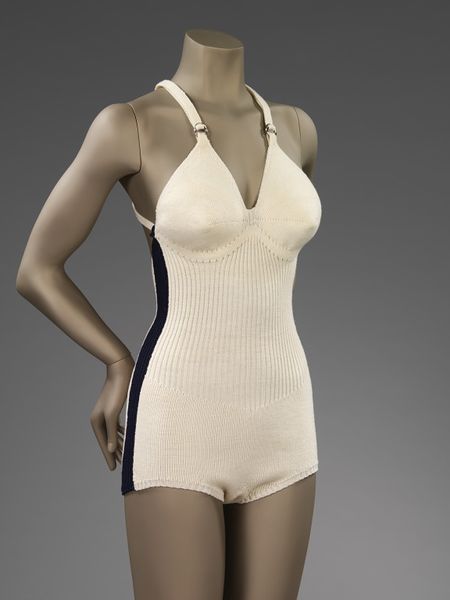
Let’s learn about knitting
Knitting can be done on knitting needles, on a loom or machine, or even on your fingers. What all these methods have in common is that they create a stretchy fabric made up of interlocking loops of yarn.
Yarn is made up of fibres that have been twisted or spun together to make a strong cord. People have been using yarn to make clothes for around 50,000 years, since the Paleolithic or Old Stone Age. It can be made of some very surprising fibres!
Bamboo or stinging nettles can be used to make yarn, as well as sheep’s wool, yak or camel hair. Even cat hair can be used to make yarn! What do you think you could design using cat hair? Many modern yarns are made of synthetic fibres such as acrylic or nylon, which make it safe to go in washing machines! Legwarmers are made from synthetic fibres. They are popular with dancers who need to keep their joints warm, and they were very fashionable in the 1980s.
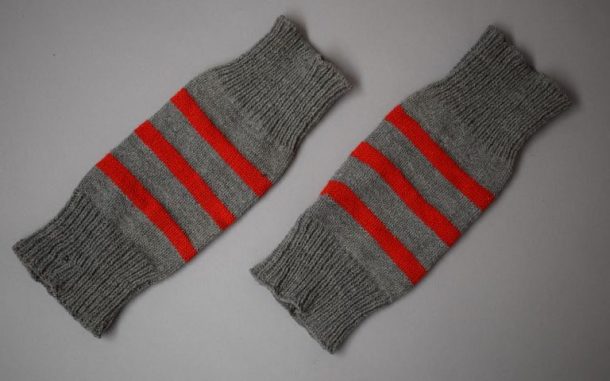
Let’s make a Knitting Nancy
You can knit even if you don’t have needles. A creative toy that has been popular for many years is a Knitting Nancy – also known as a French Knitting doll, a knitting noddy and lots of other names. It’s easy to make your own with items you have around the house. Let’s get started!
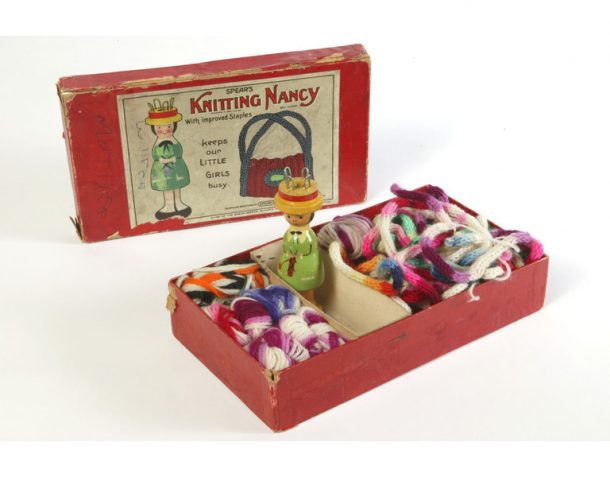
To make your Knitting Nancy you will need
- 4 lolly sticks
- A cardboard tube
- Glue
- Sticky tape
- Scissors
- Something to decorate your tube (pencils or pens)
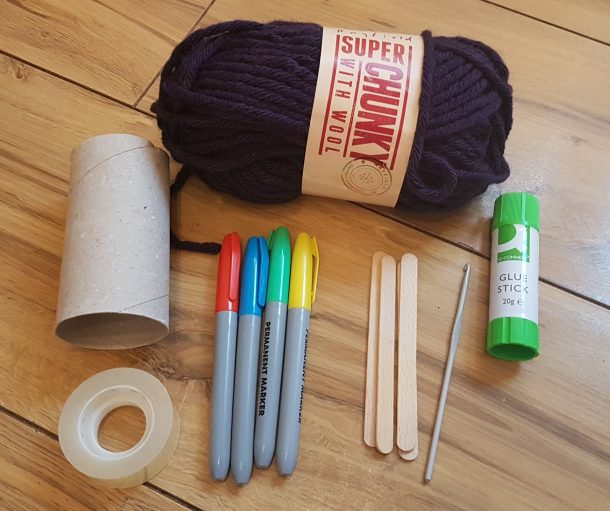
When you’re ready to knit you will need
- Yarn. I used super bulky yarn, as its quicker to knit with, but any yarn will do.
- Something to lift your loops with – a loom-band hook or crochet hook are ideal, or a cocktail stick (be careful if it’s sharp!)
How to make your Knitting Nancy
- Glue your lolly sticks to the outside of the cardboard tube, leaving about 2cm of the sticks sticking out above the top of the tube. Make sure your sticks are evenly placed around the tube.
- Decorate your tube using pens or pencils.
- Wrap sticky tape around the tube and sticks at the top and bottom to make sure they are extra secure.
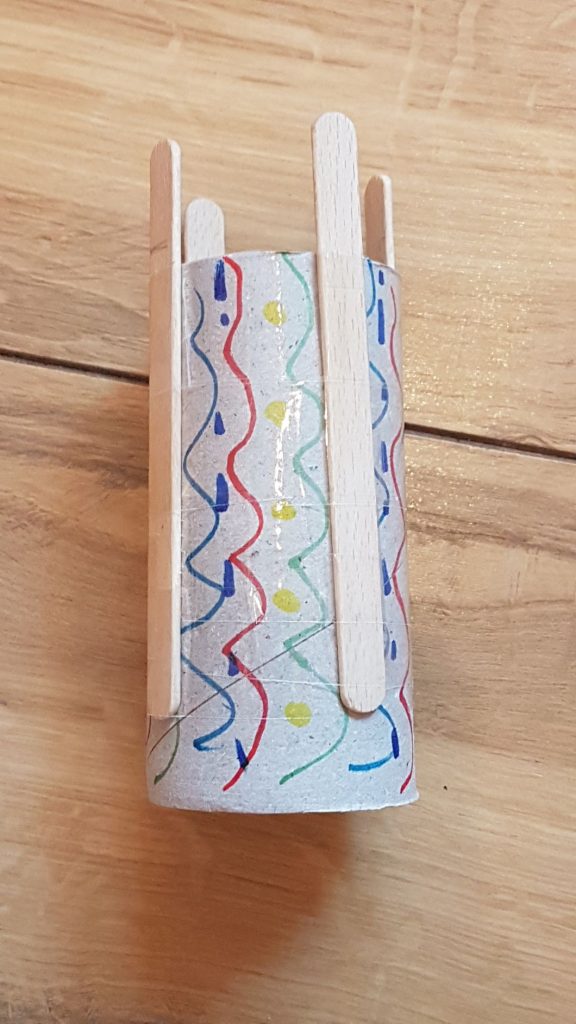
That’s it! Your Knitting Nancy is ready to use.
Let’s do some French knitting
- Take your yarn and tie a loose loop around one of the lolly sticks. Make sure the short end of your yarn is hanging down inside your cardboard tube. The ball of yarn will be on the outside.
- Turn your Knitting Nancy so the next stick is in front of you. Wrap your yarn around the next lolly stick, as you can see in the picture below.
- Do the same around the next two sticks, until you are back where you started. You will have two loops on the first stick – your first knotted loop and then the new wrapped loop.
Now you need your hook or cocktail stick.
- Find the post with two loops and, using a hook or cocktail stick, carefully lift the bottom loop over the top loop so there is only one loop left on the stick. You’ve made your first stitch!
- Now wrap the working yarn around the next stick so you have two loops and repeat stage four to make the next stitch. Carry on doing this, turning your Knitting Nancy a quarter turn each time. Pull gently on the short end of the yarn after every few rounds, to keep your stitches nice and even.
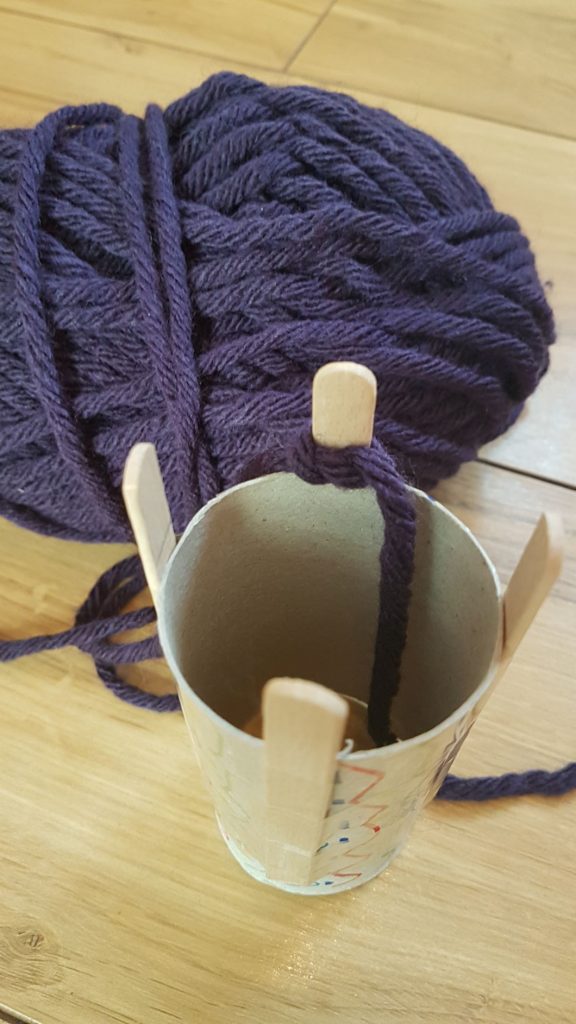
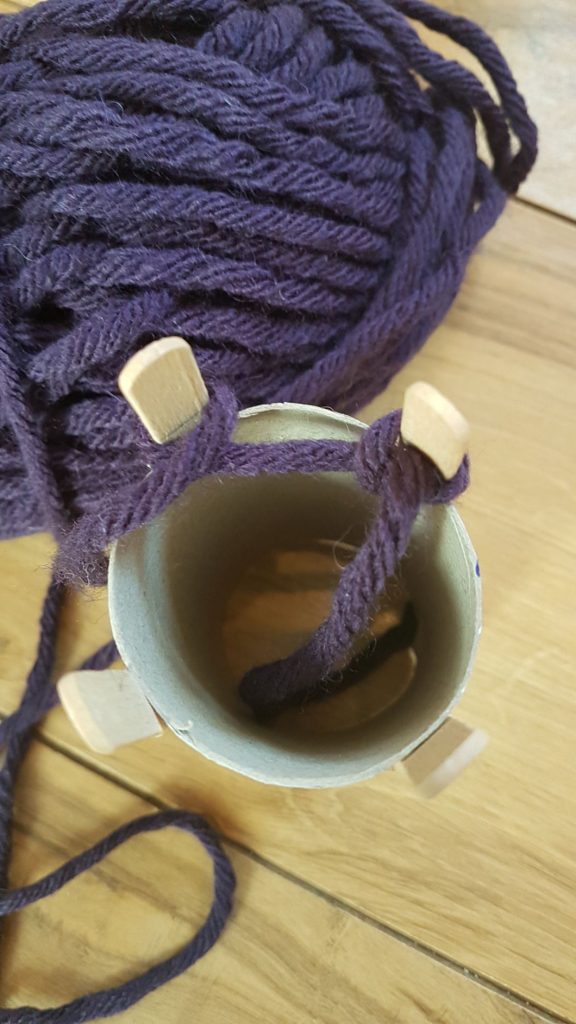
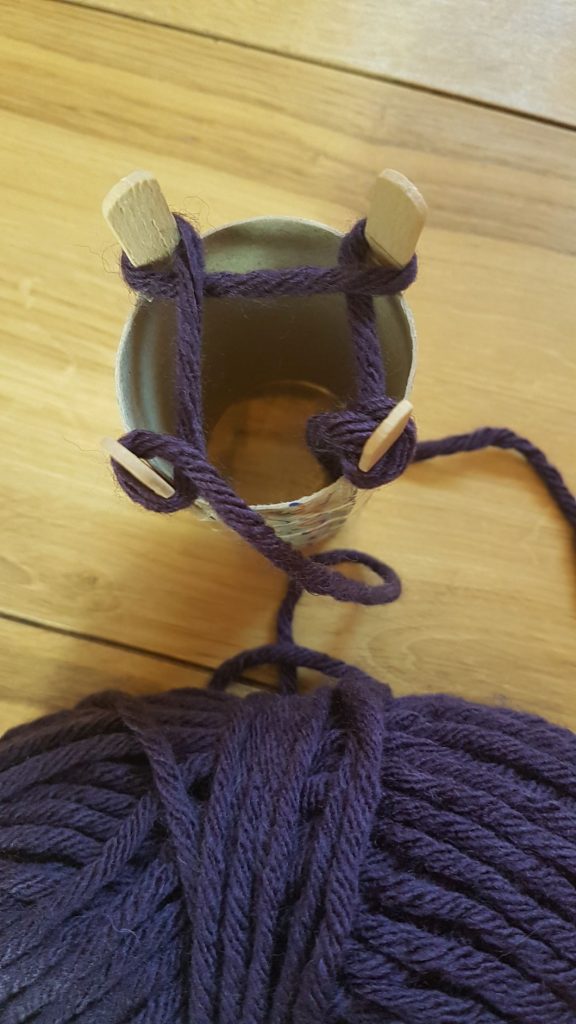
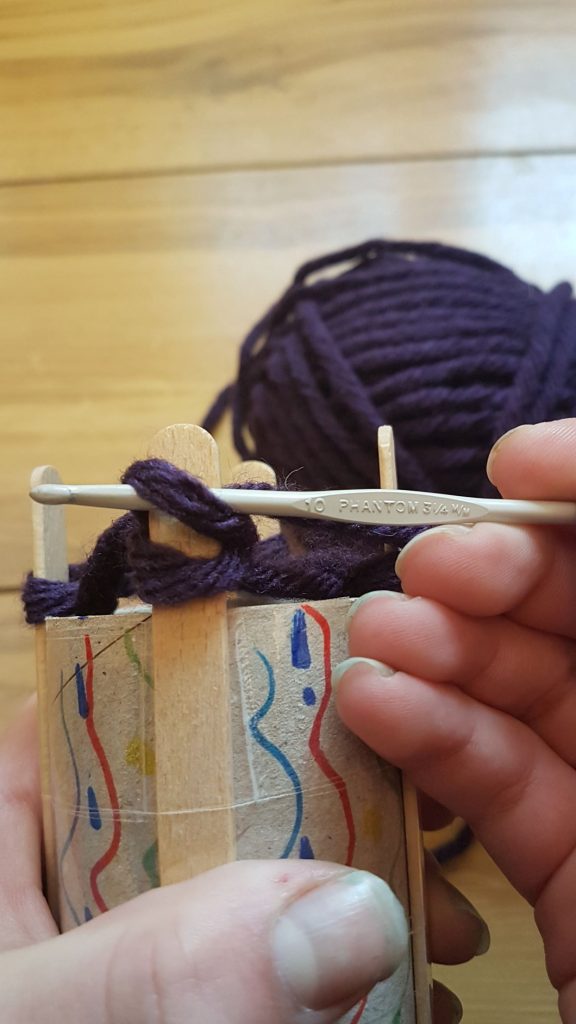
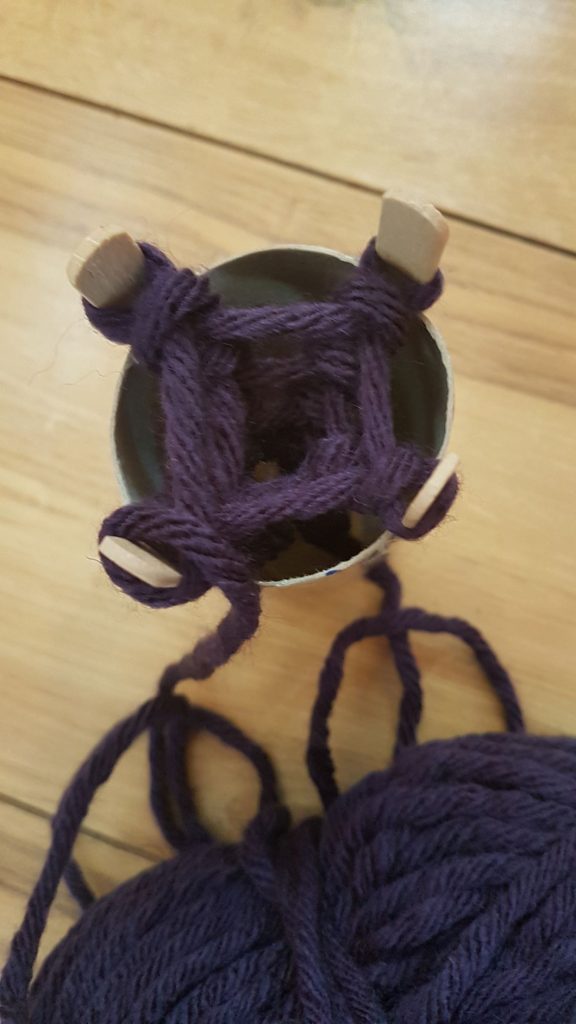
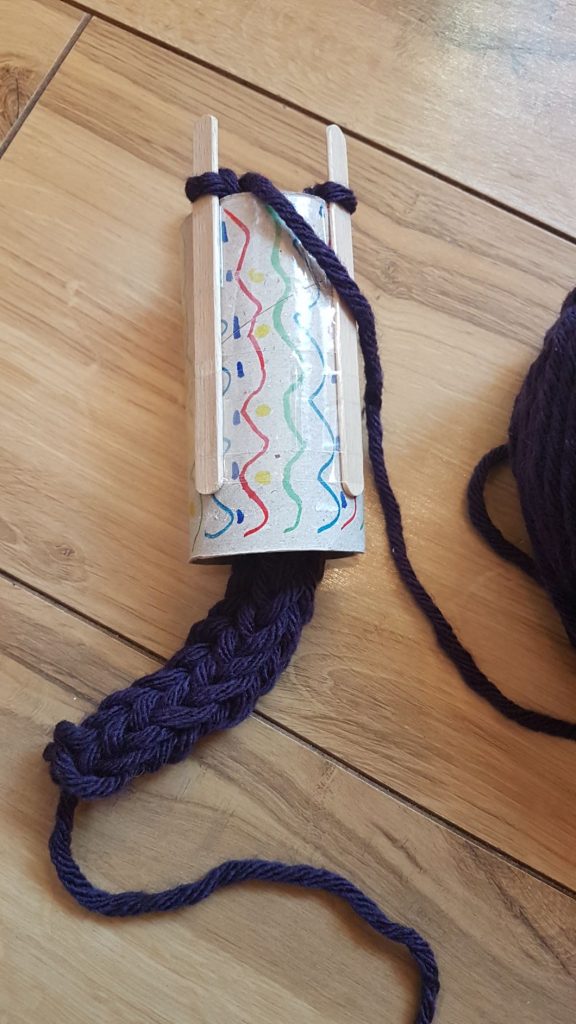
Keep going until your knitting is as long as you’d like! The Guiness World Record for the longest French knitting braid was set in 2016 by Mr Edward Hannaford of Sittingbourne, Kent. It was 31.42 kilometres long and took him more than 20 years – and he’s still going!
If you are feeling confident, you can try and change the colour of the yarn. Cut the end of your working yarn about a ruler’s length away from your post. Tie the next colour on and just keep making your stitches. This is a fantastic way of using up odds and ends of yarn.
When you have finished your French knitting, you’ll need to cast off to make a secure end. ‘Cast off’ means to make a secure end to your knitting so it doesn’t unravel.
To do this:
- Choose a post – it doesn’t matter which one. Carefully lift the loop off the post and place it over the next post, so you have two loops on the second post and none on the first.
- Then, just as if you were making a stitch, lift the bottom loop over the top loop and the post.
- Lift the loop that’s left onto the third post, and repeat step 2.
- Carry on until you have one loop left on the last post. Snip your working yarn, leaving a long tail. Lift the last loop off the post and tuck the tail back through the loop, carefully pulling it tightly to make a knot.
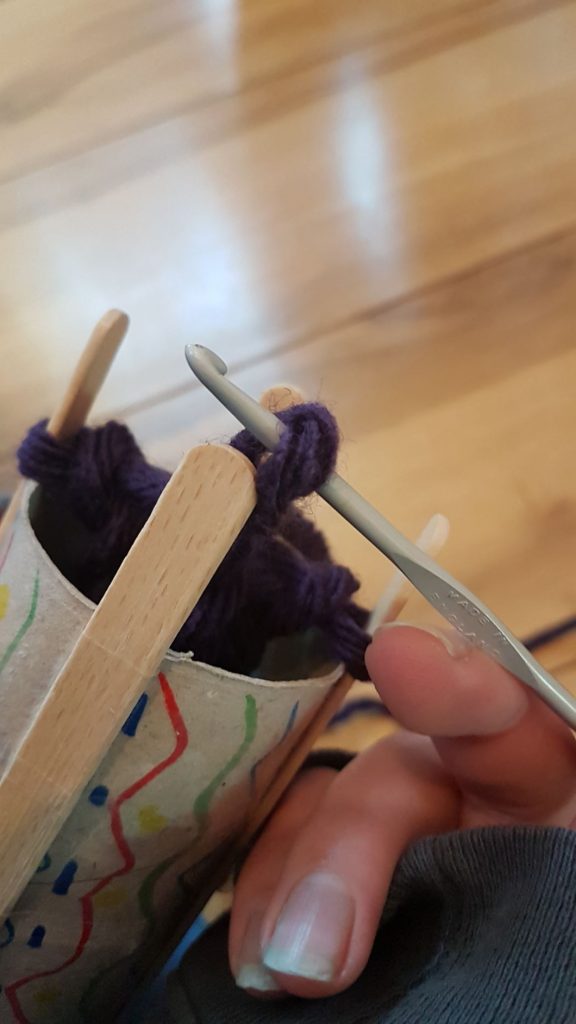
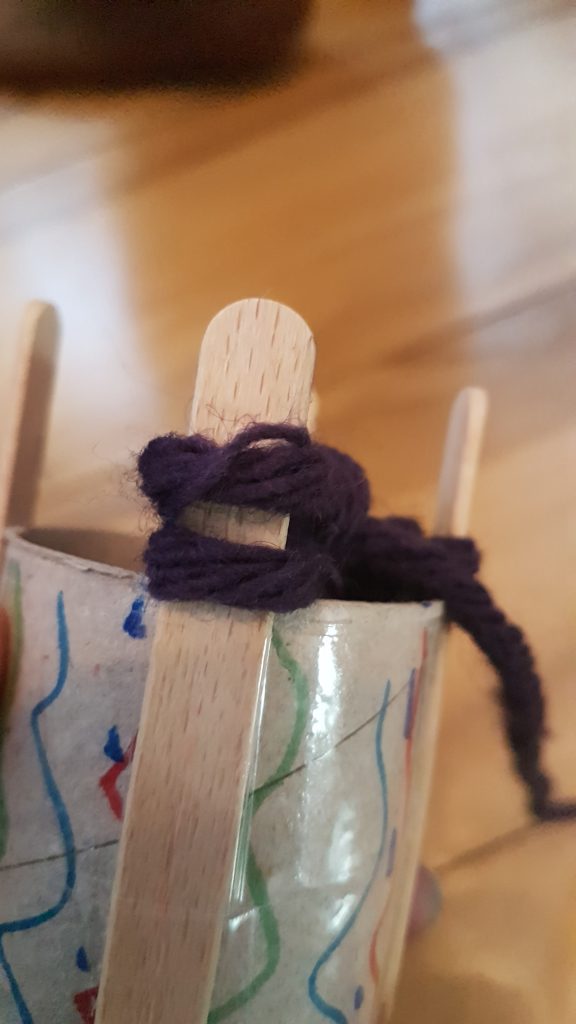
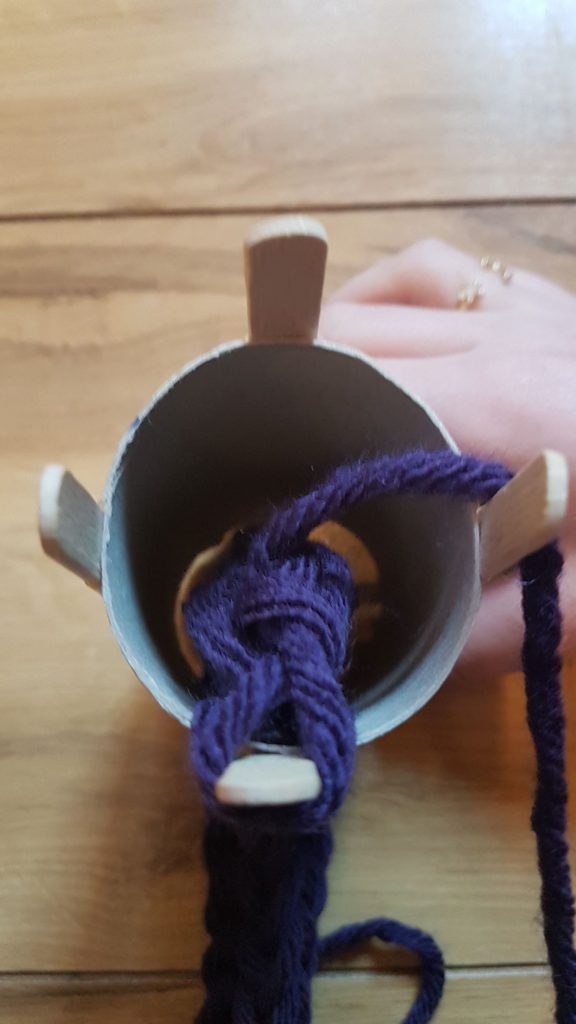
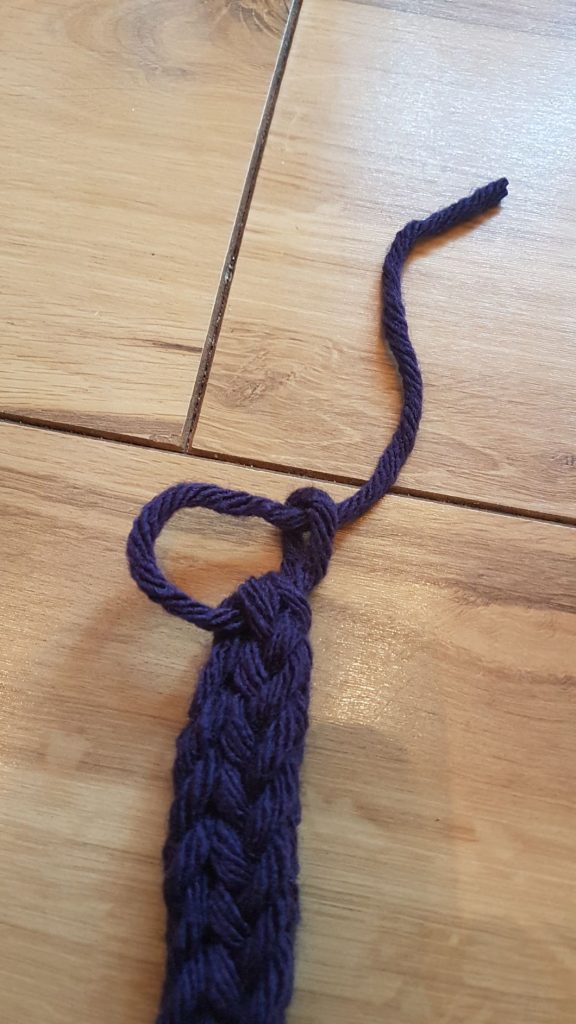
Let’s share our creations
What can you do with your knitting? I tied my ends together to make a simple braid necklace. You could make two or three in different colours and twist or braid them together to make a necklace? A yarn necklace will keep your neck warm as well as looking good.
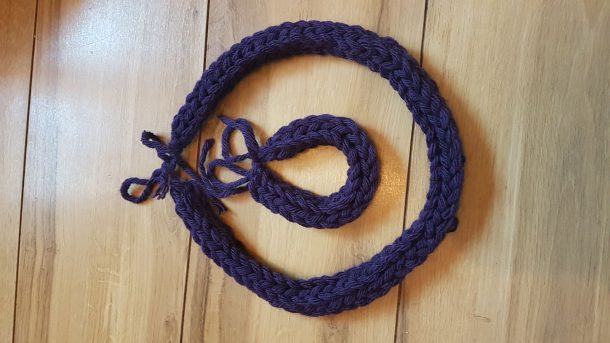
Some people use their knitting to make the world a happier place! Prosecco and Purls from Caerleon in South Wales use knitting and other yarn crafts to decorate post boxes, fences and other street furniture. This is called yarnbombing. Perhaps you have a tree near your house you could decorate?
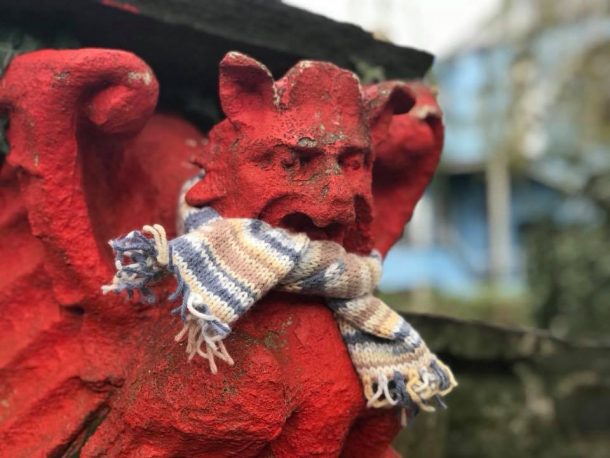
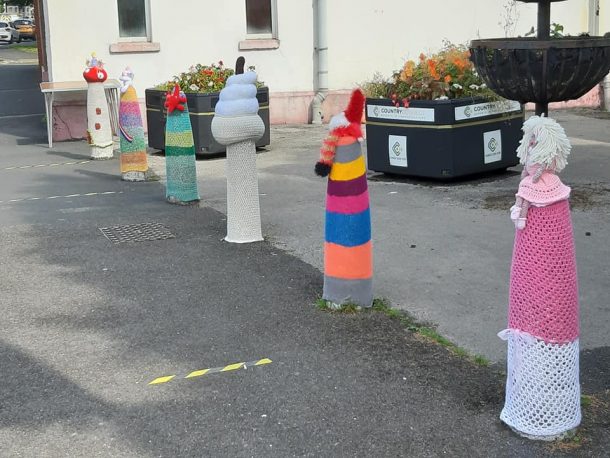



Thanks for this article. Have passed it on to my grand daughters. I think they might need a little help with making a stitch.